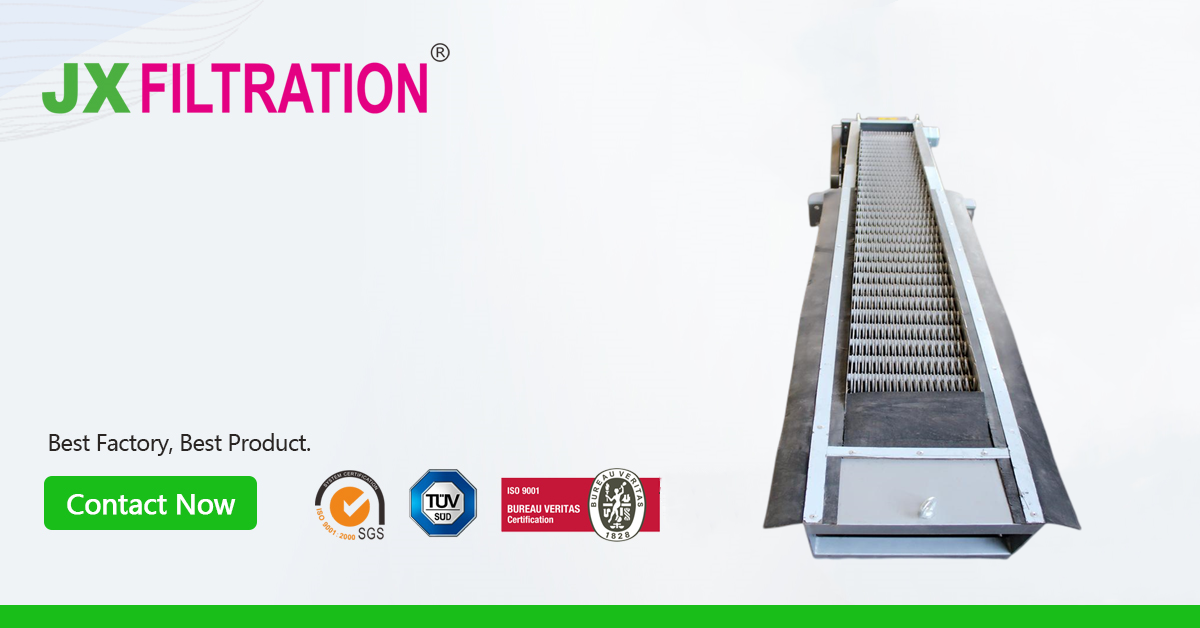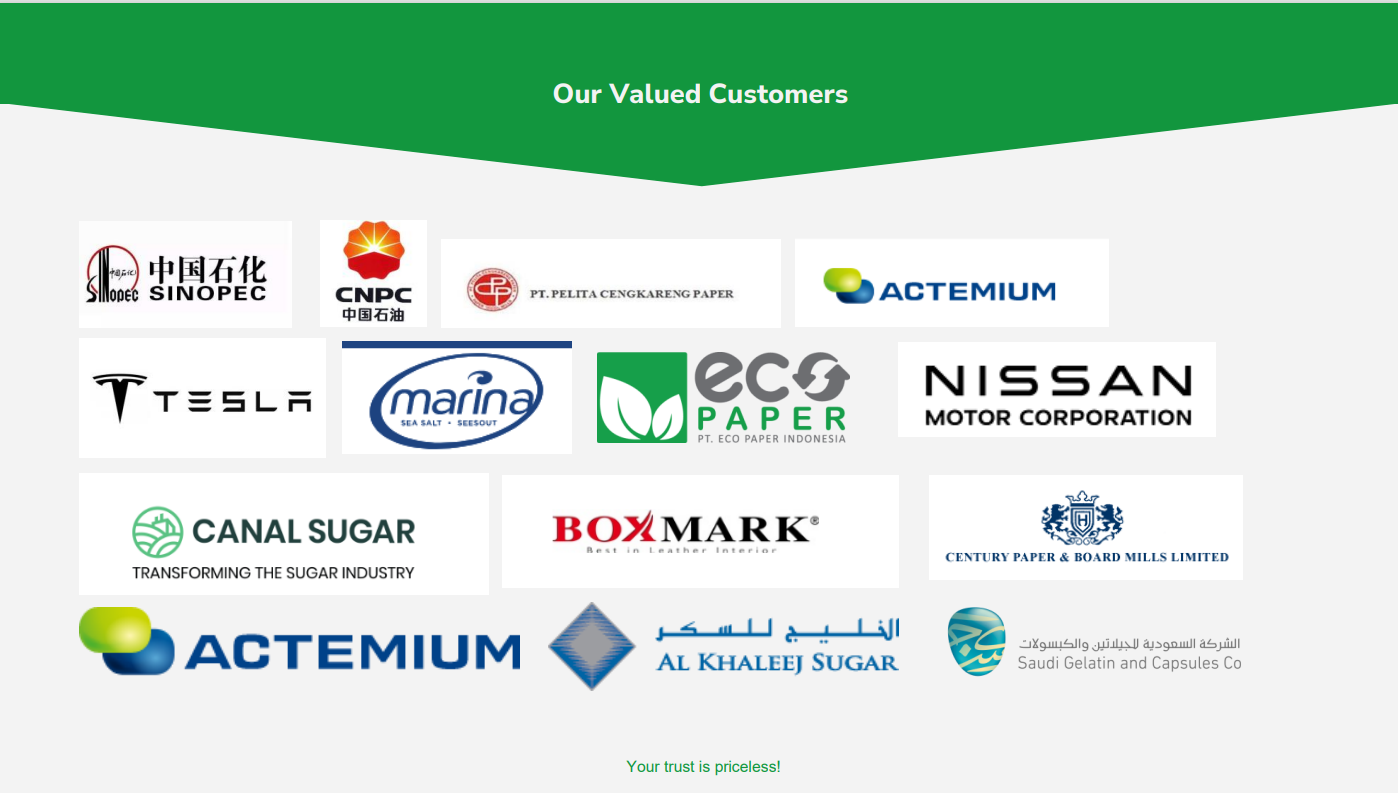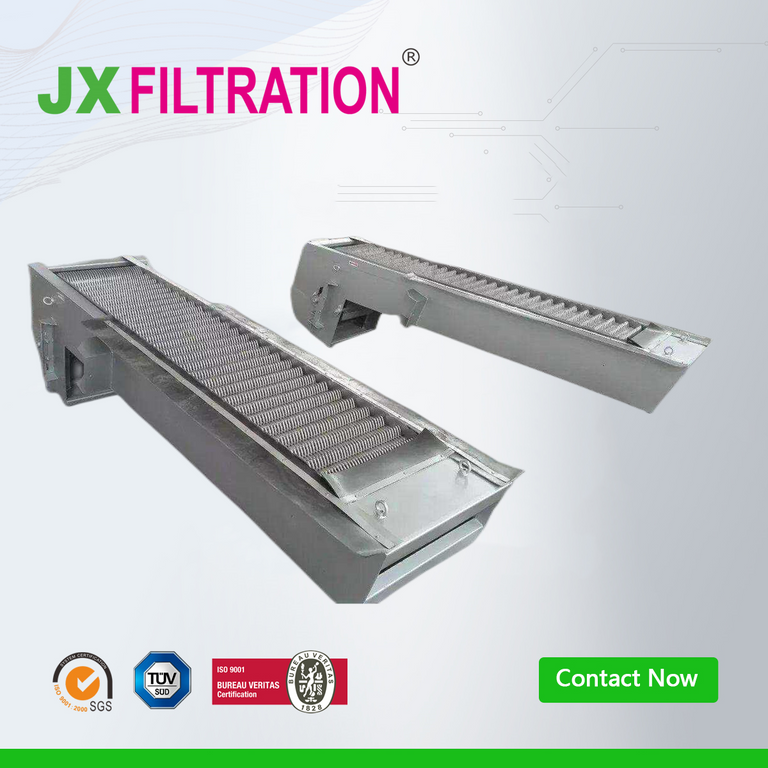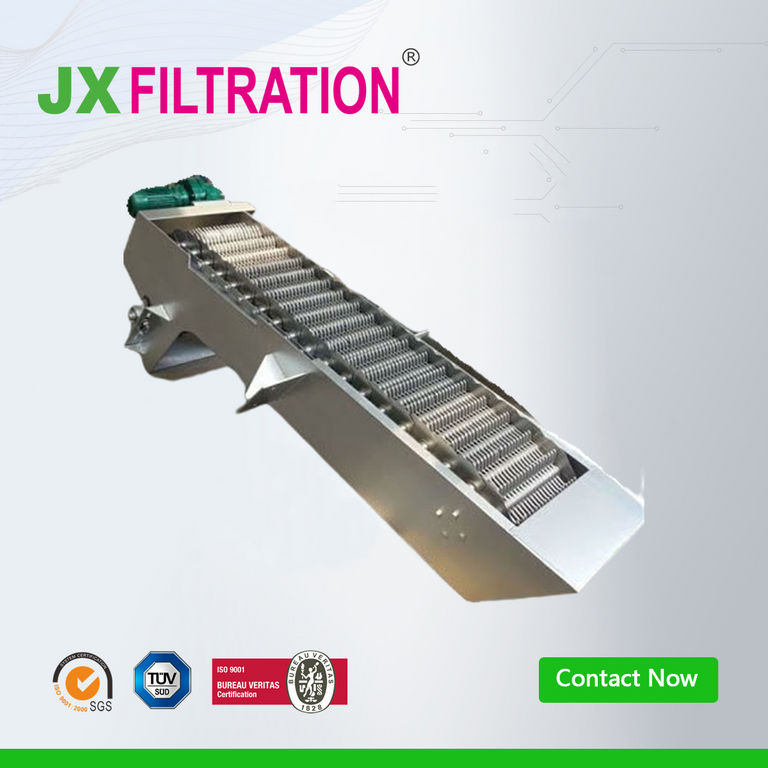What Are The Types Of Mechanical Bar Screen
1. High-Chain Type Mechanical Bar Screen
-
Structure:
Drive unit + synchronized chains + bar rack. The rake moves along guide rails to remove debris.
-
Application Scenarios:
Deep pit wastewater treatment (e.g., collection wells); highly effective in removing long fibers and ribbon-like materials. -
Advantages:
All transmission components are above the waterline, simplifying maintenance and saving installation space. -
Limitations:
Prone to chain blockage by debris; corrosion resistance requires improvement.
2. Wire Rope-Driven Bar Screen
-
Innovative Features:
Dual wire rope drive + rake lifting guide rail design, equipped with overload alarm system. -
Application Scenarios:
Small- to medium-scale wastewater treatment plants with a capacity of 150,000–250,000 m³/day. -
Advantages:
Capable of handling high sand content wastewater; self-locking mechanism prevents secondary pollution. -
Limitations:
Complex mechanical structure; relatively high maintenance cost.
3. Rotary Arm Arc Bar Screen
-
Technical Features:
Arc-shaped bar rack + rotary rake arm, integrated with ultrasonic level control. -
Application Scenarios:
Shallow channel screening, especially suitable for wastewater containing grease or oils. -
Advantages:
Compact structure with automatic slag discharge device. -
Limitations:
Requires high manufacturing precision; susceptible to deformation from water flow impact.
4. Circulating Rake-Type Bar Screen
-
Core Design:
Enclosed chain drive + dual bar racks (front/rear positioning). -
Application Scenarios:
Deep well applications in water supply and drainage projects; excellent for particle size-based interception. -
Advantages:
Solid-liquid separation efficiency up to 95%; adjustable flow velocity across the screen (0.6–1.0 m/s). -
Limitations:
Relatively high energy consumption; not suitable for wastewater with high fiber content.
Any Requirements, Contact Us Now!
Kris
Email/Teams: kris@filtrationchina.com
Mobile/Whatsapp/Wechat: +86 18980776200


